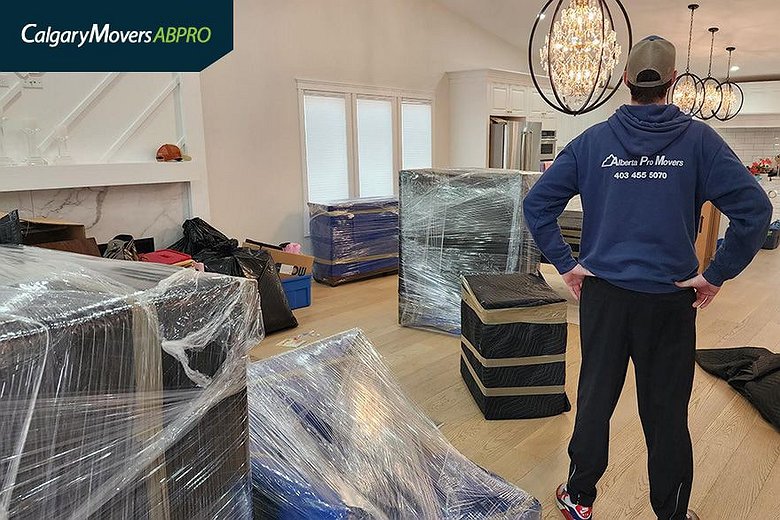
Moving isn't a one-size-fits-all endeavor. In Calgary's dynamic real estate landscape, the distinctions between relocating from an apartment versus a house are more than just surface-level. Whether it's maneuvering through narrow downtown hallways or coordinating large-scale moves in suburban neighborhoods, each scenario presents unique logistical challenges. Professional movers in Calgary understand this deeply, adjusting their strategies accordingly to ensure efficiency, safety, and customer satisfaction. Let's explore the precise differences and how seasoned movers adapt to each type of relocation.
What are the major logistical differences between apartment and house moves?
The logistics of moving are largely dictated by physical environment, accessibility, and time sensitivity. Calgary movers distinguish between apartment and house moves using several key parameters: space, building features, location types, parking situations, and the total duration required.
Space Constraints and Accessibility
In apartment moves , limited hallway widths, elevators, and stairwells can complicate the transportation of large furniture or appliances. These tight quarters often require disassembly of larger items and the use of dollies and padded covers to avoid damage to walls or floors.
Conversely, houses typically offer wider entryways and drive-up access, making it easier to load and unload directly into a moving truck. That said, houses can present challenges of their own, such as multi-story layouts or basement-to-truck hauls, which extend loading time.
Elevators vs. Stairs
Elevators are common in apartment buildings, but not always available or reliable. Movers must account for shared elevator bookings, service elevator limitations, and the time delays associated with waiting for access. In contrast, homes — particularly split-level or two-story properties — rely on stair access exclusively, which increases physical strain and the need for careful coordination to avoid injuries or damages.
Urban vs. Suburban Locations
Apartments in Calgary are often concentrated in urban cores like Beltline, Downtown, or Mission — areas characterized by busy streets, restricted parking, and building regulations. Suburban house moves in areas like Tuscany, Auburn Bay, or Arbour Lake provide more flexibility but often require longer drives and more planning for truck access.
Parking and Truck Access
Parking remains a top logistical challenge for apartment relocations. Movers may need to secure permits, use loading zones, or navigate underground parkades with height restrictions. House moves usually allow curbside parking or driveway use, which simplifies both setup and loading.
Time Efficiency and Scheduling
Due to shared building access, elevator bookings, and narrow corridors, apartment moves generally take longer per item moved. House moves, while potentially involving more items, can benefit from more direct routes and less time waiting for access points, making them faster in many scenarios.
People also search
Comparison Chart: Apartment vs. House Moves in Calgary
| Criteria | Apartment Move | House Move |
| Space Constraints | Narrow hallways, small elevators | Open layouts, direct truck access |
| Elevator/Stairs | Shared elevators or long stairwells | Internal stairs, easier outdoor loading |
| Location Type | Urban core, congested areas | Suburban neighborhoods, wide streets |
| Parking Access | Limited, requires permits or special access | Driveway or street parking typically available |
| Time Requirement | Longer due to limited access and elevator waits | Shorter due to direct access and faster loadin |
Real Move Scenarios in Calgary
- Beltline Apartment Move : A third-floor unit with no service elevator required movers to carry all items via stairs. The move took 6 hours for a one-bedroom unit due to narrow access and limited street parking.
- Arbour Lake House Move : A three-bedroom home with driveway access allowed a 4-person team to complete the move in under 5 hours. Despite having more volume, the easier access reduced overall time.
Understanding these differences isn't just about logistics — it's about strategic preparation, ensuring both safety and cost-efficiency for clients. That’s why reputable Calgary movers take these variables seriously during their planning phase.
Why do apartment moves often require different equipment and strategies?
Apartment relocations demand a tailored approach due to physical limitations and building policies. Unlike house moves, which generally offer more freedom and flexibility, apartment relocations in Calgary require precise planning, specialized tools, and in-depth knowledge of strata and condo procedures.
Tools Used in Tighter Spaces
Professional movers often turn to compact and adaptable tools to maneuver through tight apartment hallways and elevators. Dollies with swivel wheels, narrow-width hand trucks, and lifting straps allow crews to navigate constricted corners and small doorways. In many cases, standard-sized moving equipment simply won't fit.
Additionally, floor runners, door jamb protectors, and corner guards are essential for safeguarding shared spaces and avoiding fines from property management.
Dealing with Condos or Strata Rules
One of the most underestimated hurdles of apartment moves is building regulations. Calgary’s numerous condo boards and strata councils impose specific move-in and move-out rules, such as:
- Pre-booking move times (often with 2–7 days’ notice)
- Restricted move hours (e.g., no moves after 6:00 PM)
- Insurance certificates or damage deposits
- Mandatory use of service elevators only
Ignoring these policies can result in delays, extra fees, or denied access. Experienced movers work directly with property managers to avoid surprises on moving day.
Elevator Booking Tips
Service elevators are a lifeline in apartment moves, but access is limited. Here are key strategies movers use:
- Confirm elevator booking times during the initial quote or walk-through
- Coordinate moves during mid-week or early mornings to avoid traffic and availability issues
- Bring moving pads or elevator wraps to meet building protection requirements
- Schedule team members in rotation to optimize elevator usage and reduce downtime
Common Gear Used for Apartments
Below is a summary of tools and materials commonly used in Calgary apartment moves:
- Compact four-wheel dollies – For easy turning in small hallways
- Shoulder lifting straps – To distribute weight and reduce injury risk on stairs
- Furniture sliders – Minimize friction during tight turns
- Protective padding & wraps – To shield doors, walls, and elevator interiors
- Plastic bins with lids – Stackable and easier to carry in stairwells
Visuals, Photos of Gear, User Reviews
On Calgary Movers ABPro, gear like narrow-profile appliance dollies and lightweight aluminum ramps are rated highly for apartment jobs. Customer reviews on moving forums consistently highlight the value of these tools for tight urban living conditions. Users often note that the right gear shaved hours off their move and prevented property damage charges.
What unique challenges do house moves in Calgary present?
While house relocations benefit from fewer space constraints, they present their own logistical difficulties — especially in Calgary, where weather, terrain, and property layouts vary widely. Long driveways, bulky furniture, and large garages all influence the complexity of house moves.
Long Driveways and Access Distance
In suburban areas like Signal Hill or Coventry Hills, homes often sit at the end of long or steep driveways. This distance between the front door and the truck can add significant time and labor. In winter, snow and ice exacerbate the issue, increasing slip risks and requiring shoveling before any loading can begin.
Movers often deploy dollies with pneumatic wheels or sled-type carriers in snow conditions. These specialized tools keep the move efficient even under poor weather.
Large Item Transport and Stair Navigation
Detached homes tend to house larger items like king-sized beds, sectionals, gym equipment, or even pianos . These items require additional manpower, coordination, and — sometimes — custom rigging to transport them safely.
Multi-level homes also increase the need for team communication when carrying items up or down narrow staircases. Walkout basements add another layer of complication, as items may need to be carried around the house to access the truck.
Packing Garages and Sheds
A common time sink in house moves is the garage. Homeowners often underestimate the time required to pack and move:
- Tools and power equipment
- Hazardous materials (which movers often can’t transport)
- Storage shelves, bikes, and lawn mowers
These items must be cleaned, disassembled, and packed in a specific order. Movers typically designate a separate team member to handle outdoor and garage items efficiently.
Outdoor Logistics and Weather Considerations
Calgary’s weather is a constant wildcard. Movers plan based on the season:
- Winter: Add salt and shovel crews to clear paths. Use blankets for temperature-sensitive items.
- Summer: Schedule earlier start times to avoid heat-related fatigue and protect items from UV damage.
- Spring/Fall: Use tarps to prevent mud tracking or water damage.
Regional stats from Alberta Moving Association reports indicate that house moves in Calgary take 20–35% longer on average during the winter due to outdoor complications.
Trusted Mover Insights and Case Studies
- Case Study – Cougar Ridge Winter Move : A 5-bedroom home in deep snow required snowplowing, six movers, and specialty gear to complete the job within 10 hours.
- Case Study – Springbank Acreage : Moving a large home with a detached garage and horse barn required multiple trucks and zone packing strategies. Without detailed planning, the move could have taken two full days.
Professional Calgary movers prepare for these variables in advance — adjusting team size, gear, and scheduling to ensure moves stay on track, regardless of the season or layout.
Conclusion: What should you consider when choosing Calgary movers for your specific move?
Whether you're navigating a tight downtown apartment or moving from a spacious suburban home, selecting the right moving company in Calgary is about understanding the unique demands of your relocation type. Not all moves are created equal — and neither are all moving companies.
Key Factors to Evaluate
To avoid frustration, delays, or unexpected costs, focus on these essential factors when hiring Calgary movers:
- Specialization – Does the company have experience with your type of move (apartment vs. house)?
- Building Compliance – Can they handle condo rules, strata requirements, and elevator coordination?
- Weather and Terrain Planning – Are they equipped for Calgary’s unpredictable climate?
- Equipment Inventory – Do they own or rent tools suited for your move?
- Team Size and Training – Can they scale their crew appropriately and ensure trained personnel are on-site?
Expert Tips on Hiring the Right Team
We asked our Senior Coordinator, Adam O'Keefe, about what clients most often overlook:
"People tend to compare only the hourly rate. But they miss how prepared a team is for their specific layout — tight stairs, elevator-only buildings, or long driveways. We spend more time planning than loading. That’s what keeps costs from spiraling."
Here are additional tips from industry veterans:
- Always ask if they’ve worked in your building or neighborhood before
- Request to see their equipment list — not every mover brings floor protection or proper dollies
- Ask about past moves similar to yours, and request references
- Check reviews specifically related to apartment or house moves, not just general ratings
Summary Table: Apartment vs. House Moves in Calgary
| Feature/Challenge | Apartment Move | House Move |
| Space Constraints | Narrow halls, elevators, shared entryways | Wide entry, more room inside/outside |
| Special Equipment Needed | Lifting straps, compact dollies, sliders | Ramps, appliance dollies, moving blankets |
| Team Size | Smaller (2–3 movers) | Larger (4–6 movers) |
| Time Required | Shorter with good planning | Longer due to distance and volume |
| Weather Impact | Less outdoor work, but elevator delays | Heavy impact on walkways and driveways |
| Permit/Policy Considerations | Strata rules, elevator booking | Few (but may require street parking permits) |
| Access Complexity | Tight scheduling, shared access | Long driveways, more hauling distance |
| Packing Areas | No garages, limited storage | Include garages, sheds, outdoor gear |
Why Calgary Movers ABPro Makes the Difference
If you’re looking for vetted, locally trusted professionals, Calgary Movers ABPro offers an aggregated listing of fully insured and experienced movers who specialize in both apartment and house relocations. The site makes it easier to:
- Filter by move type (apartment, house, long-distance, etc.)
- Check company ratings and compliance with city permits
- Contact movers who already understand the building codes and weather patterns of Calgary
Choosing the wrong mover can turn a stressful day into a logistical nightmare. But choosing the right one — especially one prepared for your exact needs — can mean a move that’s not only efficient but genuinely smooth.
So, what’s the takeaway?
Know your move. Pick your team accordingly. And don’t underestimate the power of preparation.


